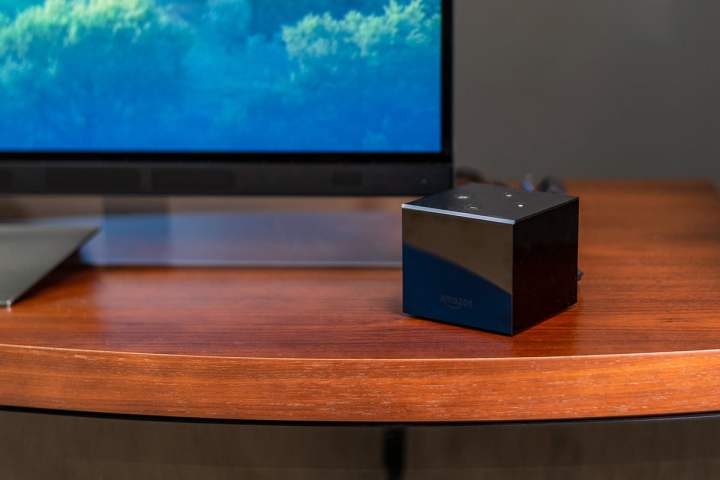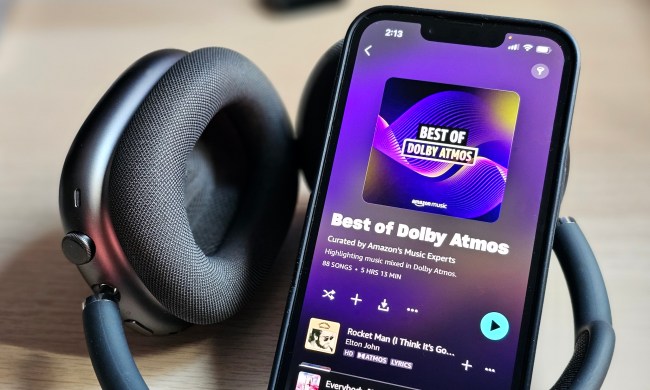We know it can be tough to keep up with the seeming infinity of Amazon products, from the latest Echo device to grocery services and even electric delivery trucks. But if Amazon’s Fire TV line has skipped you by until now, it may be worth a second look, especially if you are in the market for a set-top box, streaming service, or alternative to cable TV. Our guide will cover what you need to know about the Fire TV Stick!
Basics

The Fire TV Stick is a small streaming device, shaped like a USB flash drive, designed to connect to an outlet and then plug into an HDMI port on your TV. Along with the Fire TV app, it connects to the internet and gives your TV a special Amazon platform to use apps and watch shows, including 4K-quality content. Its competitors include devices like Chromecast, Apple TV, and the Roku Stick, which do similar things but have their own proprietary platforms.
Pricing and availability
The latest version of the Fire TV stick is available now for $40 from Amazon’s own site (you’ve probably heard of it). It offers a quad-core processor, 8GB of onboard storage, and the Alexa remote accessory for controlling the stick. A one-year limited warranty and service support plan is included.
Requirements

After a nearby outlet and free HDMI port, the Fire Stick TV has very few requirements to work correctly. But if you want to watch at the highest resolution, you’ll need a TV supporting the HDCP 2.2 standard with HDMI ports that can handle 4K. Otherwise, you can still use the Fire TV stick, but your content won’t be maxed out to the highest quality possible.
The stick includes an extension cable for easier setup. But if you find that your Wi-Fi network has poor connection quality or bandwidth issues, you can get an Ethernet adapter for a hard-line connection your internet. Keep in mind that your download abilities will be limited to the 8GB of onboard storage on the stick, most of which may be taken up with apps or games.
Compatibility

The latest version of the Fire TV Stick has impressive compatibility, supporting resolutions of 2160p, 1080p, and 720p up to 60 frames per second. For content formats, it supports Dolby Vision, HDR 10, HDR10+, HLG, and others. When it comes to audio, the Fire Stick works with Dolby Atmos, 7.1 surround sound, 2-channel stereo, and HDMI audio pass-through up to 5.1 speakers, plus audio files like FLAC, MP3, and others. Note that the stick does have support for Dolby Atmos audio, but only for compatible content (Amazon uses this to flex a bit on Netflix, which doesn’t support Dolby Atmos yet).
The stick also supports Bluetooth 5.0 connections, which means you can pair additional speakers, headphones, or even compatible game controllers with it. The latest model also has MU-MIMO support if your router supports these more reliable direct connections.
Finally, if you are really interested in using that Alexa remote, it can control basic functions for a variety of infrared devices (TVs, receivers, etc.), controlling their power or volume settings as well as the Fire TV Stick itself.
Content

If you’re going to get a streaming stick, it’s important to know what apps you can get on it to make sure it’ll have what you want. The Fire TV Stick offers all the major streaming apps, including Netflix, YouTube, Disney+, Apple TV, HBO, Starz, Hulu, ESPN, Sling TV, individual network apps, and lots more. But it’s no surprise that Amazon gives particular favor to its own Amazon Prime Video, which is often showcased in ads or announcements on the Fire TV platform.
Speaking of the platform itself, the interface to navigate all this content is … fine. If you’ve ever used the Prime Video app, the interface is somewhat similar to the Fire TV’s. Categories are divided into Movies, TV Shows, Apps, and Settings. The Home screen will give you shortcuts to your favorite apps and recent content to hit popular streaming apps that you’re using. It’s serviceable and fairly easy to learn, but it won’t blow any minds.
Note that the Fire TV Stick won’t be able to connect with existing cable or satellite TV services, so in that sense, it is a stand-alone platform.
Smart features
With the included Alexa remote, buyers also gain access to Alexa’s capabilities. That includes asking questions, getting weather updates, controlling compatible smart devices — of which there are many — viewing compatible security cams, setting timers or reminders, playing games from the Alexa skills, and searching for a particular program by voice. It’s a nice feature to have if you don’t already have an Alexa device in your house, but it’s a little odd that it’s built into the remote itself, so you will need to get used to talking to your remote.
Upgrades

Looking for something more for your entertainment system? Consider the Fire TV Cube. It’s both a speaker and a Fire TV device with its own mic for Alexa voice commands. It also has more storage and a better processor, and it includes Ethernet compatibility. But it’s far more expensive too: You’ll have to pay $120 for this upgrade.
Fire TV Stick or a smart TV?
If you have a smart TV, do you need a Fire TV Stick? This is a frequent question where the answer depends on your preferences. A smart TV can connect to the internet and offer most of the apps that you can get from a Fire TV stick.
The big difference is that the Fire TV Stick has its own interface that may be a bit smoother and easier to master than the often-clunky interfaces included on smart TVs. It may also have better compatibility with your wireless speakers and smoother performance — and you get that extra Alexa remote, too. It’s also a potentially worthwhile upgrade if you are an Amazon Prime Video fan.



